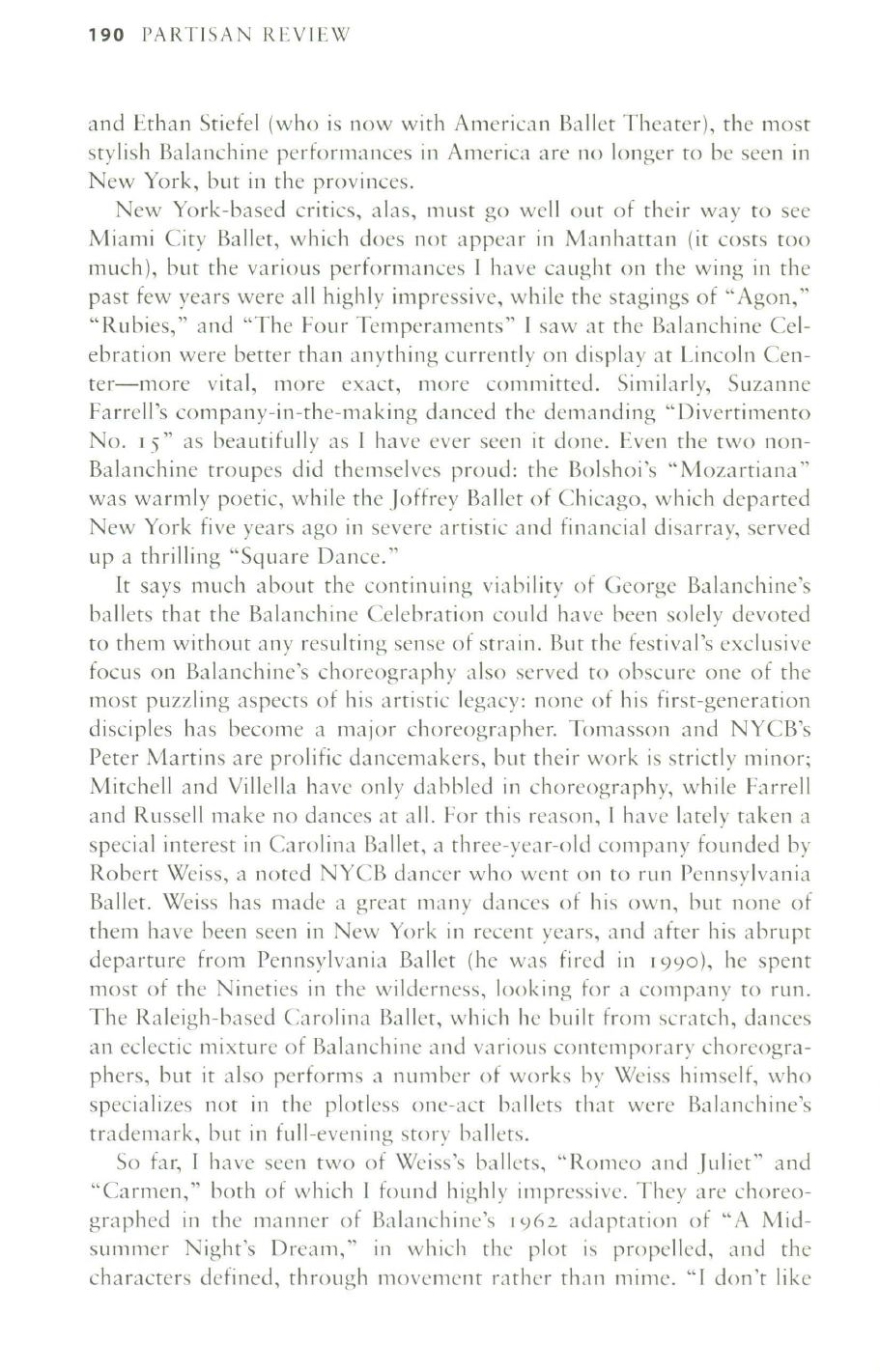
190
PARTISAN REVIEW
and Ethan Stiefel (who is now with American Ballet Theater), the most
stylish Balanchine performances in America are no longer
to
be seen in
New York, but in the provinces.
New York-based critics, alas, must go well out of their way to see
Miami City Ballet, which does not appear in Manhattan (it costs too
much), but the various performances I have caught on the wing in the
past few years were all highly impressive, while the stagings of "Agon,"
"Rubies," and "The Four Temperaments" I saw at the Balanchine Cel–
ebration were better than anything currently on display at Lincoln Cen–
ter-more vital, more exact, more committed. Similarly, Suzanne
Farrell's company-in-the-making danced the demanding "Divertimento
No.1 5" as beautifully as I have ever seen it done. Even the two non–
Balanchine troupes did themselves proud: the Bolshoi's" Mozartiana"
was warmly poetic, while the Joffrey Ballet of Chicago, which departed
New York five years ago in severe artistic and financial disarray, served
up a thrilling "Square Dance."
It says much about the continuing viahility of George Balanchine's
ballets that the Balancbine Celebration could have heen solely devoted
to them without any resulting sense of strain. Bur the festival's exclusive
focus on Balanchine's choreography also served to ohscure one of the
most puzzling aspects of his artistic legacy: none of his first-generation
disciples has become a major choreographer. Tomasson and NYCB's
Peter Martins are prolific dancemakers, hut their work is strictly minor;
Mitchell and Villella have only dahhled in choreography, while Farrell
and Russell make no dances at all. For this reason, I have lately taken a
special interes t in Carolina Ballet, a three-year-old company founded by
Rohert Weiss, a noted NYCB dancer who went on
to
run Pennsylvania
Ballet. Weiss has made a great many dances of his own, hut none of
them have been seen in New York in recent years, and after his abrupt
departure from Pennsylvania Ballet (he was fired in 1990), he spent
most of the Nineties in the wilderness, looking for a company
to
run.
The Raleigh-based Ca rolina Ba Ilet, wh ich he bu iIt from scratch, da nces
an eclectic mixture of Balanchine and various contemporary choreogra–
phers, but it also pe rforms a number of works by Weiss himself, who
specializes not in the plotless one-act ballets that were Balanchine's
trademark, but in full-evening story ballets.
So far, I have seen two of Weiss 's ballets, "Romeo and Juliet" and
"Carmen," both of which I found highly impressive. They are choreo–
graphed in th e manner of Balanchine's 19h2 adaptation of "A Mid–
summer Night's Dream," in which the plot is propelled, and the
characters defined, th rough movement rather tha n mi me. "I don't like


